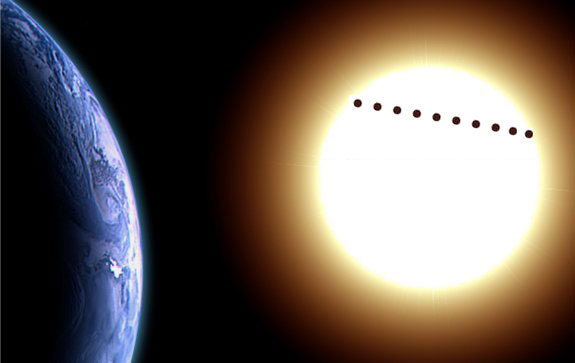Example 04-03: The Transit of Venus
A Transit of Venus across the Sun takes place when the planet Venus passes directly between the Sun and Earth (or another planet), becoming visible against (and hence obscuring a small portion of) the solar disk. The last Transit of Venus took place June 5–6, 2013 (shown below).
[Wikipedia, updated 19 June 2013 at 20:25]

What is a Transit of Venus?
When Venus passes directly between earth and the sun, we see the distant planet as a small dot gliding slowly across the face of the sun. Historically, this rare alignment is how we measured the size of our solar system. The view is like a front row seat to the transit method, by which we find planets around distant stars.
When is it?
The last Transit of Venus occurred June 5–6, 2012. The next pair of Sun–Venus–Earth alignments will be December 11, 2117 and December 8, 2125. Look for a Transit of Mercury in 2016.
What happened in 2012?
People across the globe witnessed and celebrated science in action. Observing parties, public outreach, live webcasts, art exhibits, historic displays, music, and more set the 2012 Transit of Venus apart as a collective science experience.
History of The Transit of Venus
There is some evidence that the ancient Babylonians recorded a relationship between Venus and the Sun in the 16th Century BC. However Galileo Galilee (1610), was the first human to actually see Venus as more than just a bright point of light in the sky. Johannes Kepler predicted that Venus would pass in front of the Sun on December 6, 1631, but unfortunately the transit was not visible from Europe at all.
